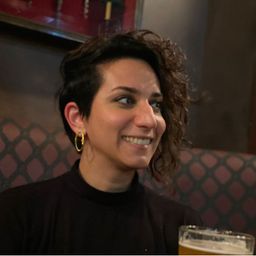Voir, entendre, sentir, goûter l’architecture... I
Mon statut pour la session
Le « ressenti » est devenu une clé de lecture du monde prépondérante à l’ère numérique, ce qui pourrait expliquer en retour une recrudescence de travaux de recherche s’intéressant à la diversité des ambiances ressenties dans les environnements bâtis.
Ces approches qui tantôt donnent un accès privilégié à des visions du monde ou mènent à des modes de conception plus attentifs à l’expérience des usagers, apportent de nouveaux éclairages sur des éléments auparavant négligés qui traduisent plus finement les relations multiples qui se tissent entre les humains et l’environnement bâti.
Cet atelier accueille des propositions qui abordent tant des cas concrets que des réflexions d’ordre théorique, épistémologique, méthodologique ou pédagogique, s’intéressant à l’expérience sensible ou aux ambiances architecturales et permettent potentiellement d’acquérir une compréhension plus fine, transversale, des environnements urbains canadiens, notamment en regard des questions posées par le patrimoine. Envisagés en tant qu’objets d’urbanités, les productions matérielles témoignent ainsi du renouvellement des rapports collectifs (et individuels) aux espaces. Autant de manières de se demander comment l’architecture est vécue au quotidien par ceux et celles dont l’identité, dans toute sa diversité, se co-construit dans et à travers ces lieux.
Sous sessions
Through an investigation of the Citadel Theatre of Edmonton, one of the largest North American theatres, I investigate works of architecture as physical indices of colonial violence. This investigation is made through a postcolonial and ecomaterial framework that enables me to focus on the materials used in the building of the Citadel Theatre: both their geographical origin (Medicine Hat, Alberta, and California) and the labor that has gone into its extraction. Labor and extraction tie bui...
Through twenty-eight encounters, site history is explored differently; colour becomes a lens of site analysis that traces social, economic, and environmental accounts of materials, while challenging the familiarity of linear narratives and the perception of time and space. Traces of colour are stripped from written, verbal, and spiritual histories of industrial ruins. Extracting this spectrum of pigments creates material ambiguity where constructed divisions between what is human versus wh...
This communication will reflect on how architecture articulates a world that is both energetic and informational. To use the senses as an analytical tool is to consider the sensorium as a reliable intermediary for sorting the noisiness of embodied experience. That something in this noise merits mention can be understood as a foundational point for information to become knowledge, to be immortalized and passed on. The intentionality with which one looks at the world is, of course, personal,...
Par le dépouillement des archives personnelles de Melvin Charney (1935-2012), un architecte, artiste et théoricien montréalais de renom, et l’analyse du contenu de documents produits de l’enfance jusqu’à la fin de sa formation en architecture (soit principalement de 1947 à 1965), la généalogie – ou les contours - de ses réflexions sur la photographie et de ses manières d’intégrer la photographie à sa pensée et sa pratique en architecture a été retracée. Ont notamment été découvertes, dans ...
The sound of recreational activities is often considered a necessary nuisance of urban economy to be mitigated, especially during nighttime. While urban life must respond to the needs and expectations of both residents and visitors, noise is a particularly contentious topic as it sits at the intersection of concerns on liveability of and vitality and challenges ideas on successful sonic cohabitation. However, research conducted in Montreal’s downtown area shows that the sounds from recreat...




